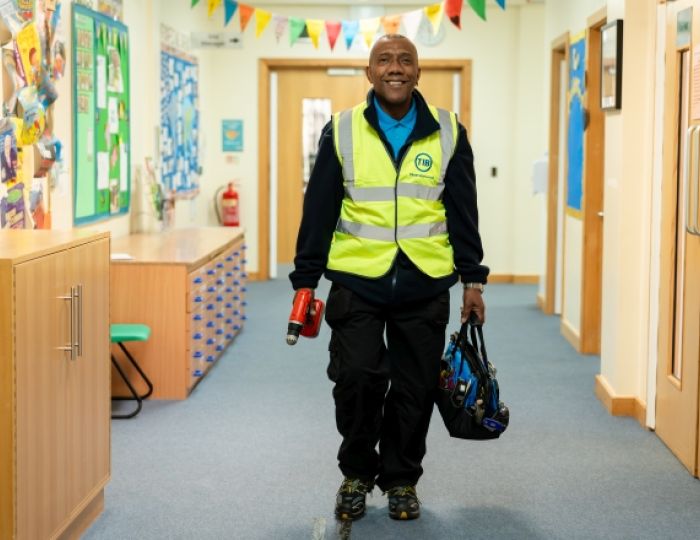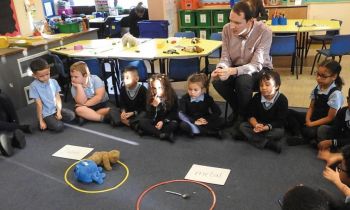As the leader of a Trust, I have witnessed first-hand how developing a family of schools can add direct value to the education and experiences of young people.
Local partnerships had been happening long before the first academy trust opened its doors, but the beauty of the Trust model is that it formalises this collaboration and builds extra capacity through the power of a central team.
At Bradford Diocesan Academies Trust (BDAT), we have worked hard to develop effective and clear policies and practices which have helped all our schools to thrive. While these processes have inevitably evolved as the Trust has grown, we have remained true to our values, ethos and ways of working.
On reaching our tenth birthday milestone, we reflect upon how the Trust has changed, our plans for growth and further development and the essential lessons we learned along the way.
Five key ingredients have helped us to drive improvement and innovation within the Trust.
Be consistent with your mission and values
A trust chooses its mission and values for a reason, and these form a core part of why schools opt to join that trust family and the staff elect to work in it. It is important that these are a lens for decision making, and that colleagues ‘get it’ and come along on the ride with you.
For example, within BDAT, our curriculum, school improvement initiatives and wider activity always reflect our values of inclusion, compassion, aspiration, resilience and excellence.
We believe in a comprehensive, holistic approach to education, giving as much weight to the soft skills and mental wellbeing of pupils as to classroom lessons and graded work.
Staying true to our values has also created a reliable and safe space for our pupils and colleagues to thrive and contributed to focused and consistent learning.
Harnessing talent at all levels
At BDAT, we could not do what we do without our colleagues. By acknowledging, celebrating and utilising the immense talent of each staff member, whether they are in a leadership, teaching, or administrative position, we nurture their individual skills to provide the best possible education for our pupils.
Collaboration between team members with vastly different skills on our inset days, in CPD and training sessions and through our internal and external networks, has been a wonderfully fruitful method to unlock the hidden potential in our staff.
More widely, establishing an inclusive working environment where everyone feels able to voice their thoughts and is supported in their career has helped us stay in a strong position even whilst the sector faces recruitment and retention challenges.
Our workforce focus led us to launch BDAT People, which gives all staff members the opportunity to fulfil their professional potential by delivering consistent, tailored and high-quality professional development for all.
Share and deploy best practice
As we continue to nurture talent and support school improvement, we are passionate about sharing our findings with other trusts and educational leaders.
We do this through our schools’ networks as they share best practice with each other, holding regular meetings with other leading Trusts in our region and beyond, sharing insights at events and conferences and contributing to the wider conversation – be that in trade publications or across social media.
One of the sector’s key strengths is meaningful collaboration, which is why we are always building our network, celebrating wins and cheering on our peers. The education sector is a fantastic community of like-minded drivers of innovation and when great ideas are shared, more children benefit.
Practice effective and strategic communication
Strong communication underpins both successful strategies and engaged stakeholders. To achieve the most effective communication, we have established a strategy, outlining information-sharing within leadership and the wider team.
We practice communication at scale – ensuring the right people know the right things in the right order and at the right time. Learning how to identify all of these ‘rights’ has been informed both by strategic thinking as well as learning from our experiences, and now allowing us to reach our best form.
Overall, the key takeaway has been that the who, when and how we communicate is dependent on what needs to be shared. For example, for good news updates, we may inform all staff at the same time through channels such as emails and newsletters.
Alternatively, if it’s a key strategic update for the Trust, we may inform staff at our annual conference so that we can offer space for discussion and questions. Equally, for more sensitive information, we may need to cascade this to a smaller group of staff where face-to-face meetings would be more appropriate.
Additionally, we encourage two-way communication, so everyone’s views are equally respected and heard.
Implement targeted and impactful growth
As an organisation expands, it must continue to scale up its capacity and resources. Therefore, times of growth and of reflection and consolidation are equally important. To maximise impact for our Trust, we abide by careful and considered growth, meaning we never grow for growth’s sake.
Each new member is considered carefully to make sure that we share the same vision and values and that our current schools will benefit from the new partnership.
It is also important to us that, as we expand, our infrastructure grows too so that we are expanding sustainably and every school continues to receive the same excellent level of support, be that in HR, finance, IT, or senior education leaders.
We ensure our current schools still receive great benefits whilst welcoming new schools to the family.
Growth includes partnerships with key stakeholders. Choosing the right partners positions the Trust for meaningful development that stays aligned with our core values and supports mutual benefits.
We have, for example, forged strong early careers training partnerships with local trusts such as Gorse, Dixons and Beckfoot, in areas including initial teacher training, NPQs and the early careers framework. These help secure high quality new entrants into our trusts as we continue to grow.
Observations from a decade of BDAT
- Practice being kind. Education can be a hard and demanding job. Kindness to colleagues goes a long way. It is vital to model kind and compassionate behaviour, both to your staff and to yourself to create the best impact.
- Teamwork is essential. As a CEO, be the type of leader that supports, encourages and empowers your team. You cannot lead a Trust on your own so make sure you grow and empower your team around you.
- Choose your battles wisely. Be firm, yet fair when pursuing solutions and do not get disproportionately caught up on low-impact items. Big-picture thinking will be your best friend.
- Collaboration is key. Do not be scared to ask for help from others who share similar roles or have differing perspectives. You often find that the best answers come from working collaboratively and taking a new approach.
- Your task list will never end – and that is okay. No two days are the same and surprises will never fail to arise. Approach each day with your best effort and forgive yourself for the rest. Do not exhaust yourself trying to tick every box.
- Support all staff equally. Non-teaching staff need as much love and support as teachers. It takes many different people, skills and roles to run a successful and happy school and trust. At BDAT, everyone matters!
Carol Dewhurst OBE is CEO of Bradford Diocesan Academies Trust




_945_573_80_int_s_c1_c_t.jpg)





